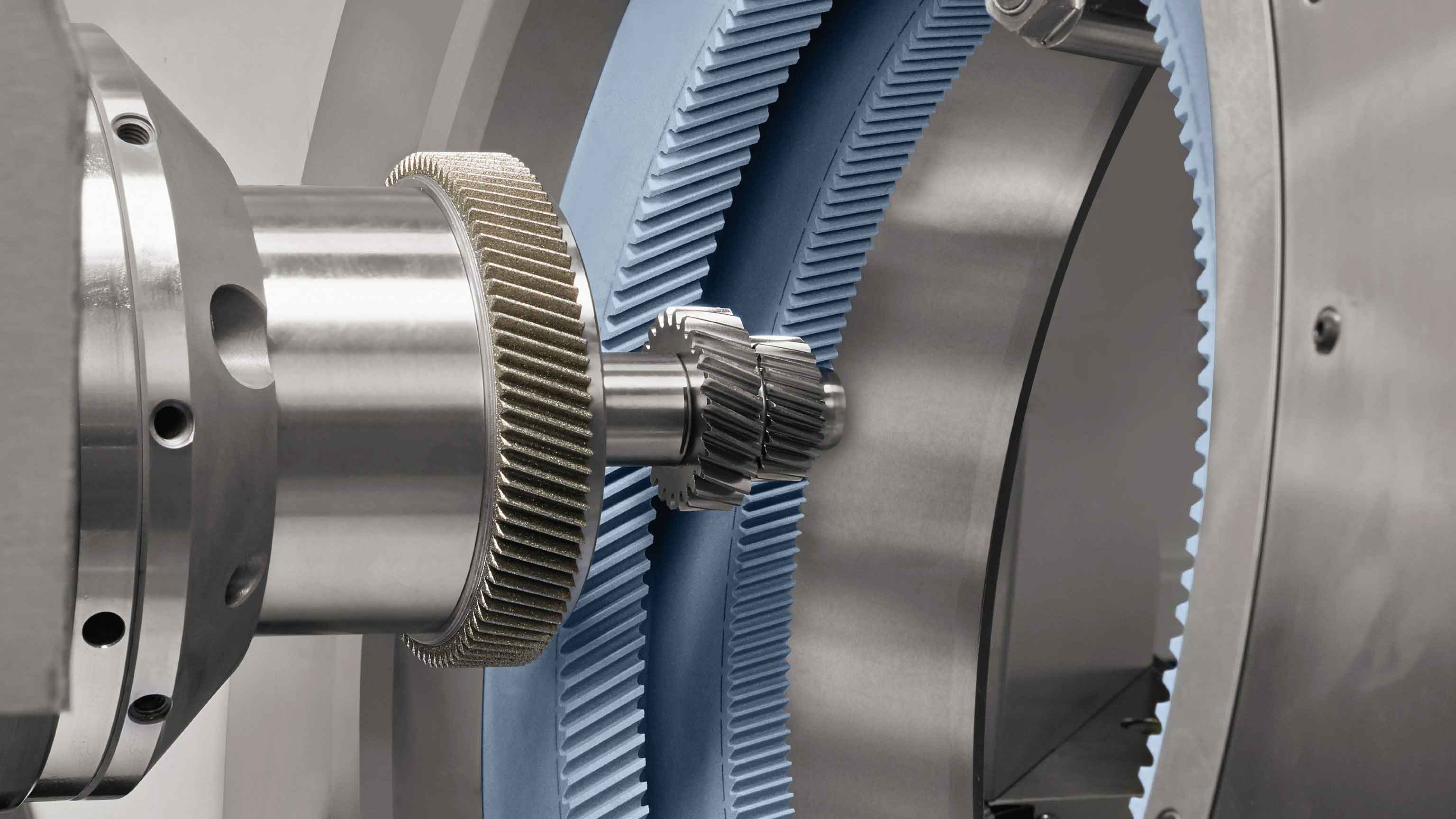The machine bed serves as the foundational component in CNC internal gear honing systems, directly influencing machining precision by supporting worktables, connecting critical components like columns, and resisting static/operational loads. Gear honing requires exceptional stability as it corrects gear tooth geometry through abrasive contact between honing tools and workpiece gears. This study establishes a comprehensive optimization framework combining response surface methodology with multi-objective genetic algorithms to enhance bed performance while reducing mass.

Finite element analysis under operational constraints reveals critical deformation zones. The HT200 cast iron bed experiences complex loading during gear honing:
$$ F_{total} = F_{tailstock} + F_{worktable} + F_{column} + F_{honing} $$
Where honing forces at tool/workpiece interfaces are:
$$ F_{honing} = F_D + F_E = 4,518.9\text{N} + 5,518.2\text{N} $$
Modal analysis identifies fundamental vibrational characteristics affecting gear honing accuracy. The first four natural frequencies and mode shapes are:
| Mode | Frequency (Hz) | Deformation Pattern |
|---|---|---|
| 1 | 206.90 | Diagonal torsion |
| 2 | 224.89 | Z-axis oscillation |
| 3 | 240.73 | X-axis oscillation |
| 4 | 297.84 | X-OZ plane torsion |
Seven rib design parameters governing stiffness-to-mass ratio are selected for optimization of the gear honing bed:
| Variable | Initial (mm) | Range (mm) | Description |
|---|---|---|---|
| P₁ | 30 | 25-35 | Rib thickness 1 |
| P₂ | 20 | 15-25 | Rib thickness 2 |
| P₃ | 185 | 165-210 | Rib aperture length 2 |
| P₄ | 95 | 85-115 | Rib aperture spacing 1 |
| P₅ | 160 | 140-180 | Rib aperture spacing 2 |
| P₆ | 200 | 190-240 | Rib aperture length 1 |
| P₇ | 185 | 165-210 | Rib aperture width |
A Central Composite Design generates 79 experimental points, evaluating mass (y₁), deformation (y₂), and first natural frequency (y₃). Sensitivity analysis reveals dominant parameters for gear honing stability:
$$ S_{P_i} = \frac{\partial y_j}{\partial P_i} \times \frac{P_i}{y_j} $$
Quadratic response surfaces model design interactions:
$$ y₁ = 892.603 + 8.236P₁ + 2.632P₂ + \cdots – 0.104\times10^{-4}P₁P₂ + \cdots + 2.600\times10^{-4}P₇² $$
$$ y₂ = -81.352 + 0.225P₁ + 0.747P₂ + \cdots – 0.234\times10^{-3}P₁P₂ + \cdots – 3.771\times10^{-3}P₇² $$
$$ y₃ = 417.3 – 0.423P₁ – 1.257P₂ + \cdots + 0.212P₁P₂ + \cdots + 0.321P₇² $$
The multi-objective formulation for gear honing bed optimization is:
$$ \begin{aligned}
\text{Minimize: } & F(P) = [y₁(P_i), y₂(P_i), -y₃(P_i)] \\
\text{Subject to: } & 25 \leq P₁ \leq 35 \\
& 15 \leq P₂ \leq 25 \\
& \vdots \\
& 165 \leq P₇ \leq 210 \\
& y₁ \leq 3.987\times10^3 \text{ kg}
\end{aligned} $$
Multi-objective genetic algorithm (MOGA) identifies Pareto-optimal solutions balancing gear honing requirements:
| Solution | Mass (10³ kg) | Frequency (Hz) | Deformation (μm) |
|---|---|---|---|
| 1 | 3.6107 | 240.99 | 5.78 |
| 2 | 3.6203 | 240.01 | 5.75 |
| 3 | 3.6099 | 241.21 | 5.58 |
Manufacturing-adjusted parameters yield significant improvements for gear honing applications:
| Parameter | Initial (mm) | Optimized (mm) |
|---|---|---|
| P₁ | 30 | 26 |
| P₂ | 20 | 21 |
| P₃ | 185 | 180 |
| P₄ | 95 | 93 |
| P₅ | 160 | 163 |
| P₆ | 200 | 204 |
| P₇ | 185 | 182 |
Validation confirms enhanced gear honing performance:
| Metric | Initial | Optimized | Improvement |
|---|---|---|---|
| Mass (10³ kg) | 3.987 | 3.609 | -6.5% |
| First natural frequency (Hz) | 206.09 | 241.21 | +14.0% |
| Maximum deformation (μm) | 6.71 | 5.82 | -13.26% |
The optimization framework demonstrates substantial improvements in static/dynamic characteristics critical for precision gear honing. Mass reduction decreases inertial forces during rapid positioning in gear honing cycles. Enhanced natural frequencies elevate operational stability thresholds, suppressing chatter during abrasive contact. Deformation reduction improves geometric accuracy of honed gears. This methodology establishes a replicable workflow for high-stiffness, low-mass structural design in specialized gear honing equipment, contributing to improved surface finishing and extended tool life in gear manufacturing processes.
